I like Aku no Hana. I think it’s good*.
That asterisk is what you’ve come here to read about, isn’t it?
Our immediate reaction to pressing ‘Play’ is a question: are we watching an anime? We establish with our first shot, which provides us with a view of power lines and green hills. So far, so good. Birds chirp, the music swells; and yet, the artificial and high-pitched “anime voice” is nowhere to be found. Where is it, along with the voiceover narration? It’s just then that we cut, and to this:
What is that? We know that it’s human, but is it anime? It shambles forward. You recoil, but submit yourself to watching. You start skipping ahead to see if this isn’t some cruel joke. You close your media player. Whatever you do, you follow it up by making a comment on the public forum of your choice.
Ladies and gentlemen, welcome to the strange world of rotoscoping.
We recall that rotoscoping is a technique of animation whereby an animator traces over a recording of something’s movement in real life. This may be a person, or an object. The actual tracing can be accomplished in a number of ways — tracing over a magnified strip of film, tracing from the film itself, digitally tracing, allowing programs to run traces,[1] et cetera. This technique is rare to encounter in Japanese animation; the last significant and excellent uses of it were in 2009’s Trapeze or the concert scene from Sakamichi no Apollon.[2] Now Aku no Hana has brought this technique to the forefront of discussion.
What I found in Aku no Hana were two things I rarely feel watching anime, and never together: fear and disgust. For the longest time, we hear nothing but footsteps and piano as we watch our protagonist walk his way to school. Unconventional camera angles, the uncanny physical features of the characters, and extended close-ups strain the atmosphere. Carefully placed sounds and music push eeriness into dread. We can’t help but feel disgust at the characters — so close to being human, but monstrosities in their physical shortcomings. The poor technical quality of animation actually helps in this regard. They even try and sound like humans. One of these monsters has the gall to declare intellectual superiority over his fellow beasts, simply for his choice in literature. Disgusting.[3] We’ve stepped fully into the uncanny valley.
I loved every second of both episode one and two. A beautifully subdued, naturally conveyed unnatural museum of base creatures not too different from us. Unexpectedly ominous.
I stand by the artistic decision to rotoscope. What I do not support, however, is how poorly the rotoscoping was executed. It shows a distinct lack of experience and laziness in the use of the technique. This post hopes to explain exactly where and why the show’s animation fails on a technical level. This will revolve around a technical examination of the principles of motion in animation.
Let’s address the question of frame rates. Contrary to the common misconception, every anime television show in recent memory has been shot in the digital standard of 24 frames per second (FPS). The only difference is in how those frames are used. Anime, given their limited budgets, tend to be animated on threes whenever possible. This means that each image is used three times consecutively every second, or that the image changes on every third frame. This produces an effective 8 frames per second.
This may seem to be an exercise in semantics, but this distinction is of phenomenal importance. If anime were truly shot in 8FPS, then fast motion would be almost impossible to portray. A car moving quickly against a road would appear to stutter.[4] It’s because anime is shot in 24FPS that animators can switch between animation on threes, twos, and ones depending on intended movement. Threes are most often used for still scenes or cuts with little movement, such as plain dialogue; twos are used for moderate movement to fast movement; and ones, while extremely rare, are generally used for key cuts and movements requiring a great deal of fluidity. There are other, more artistic, uses of these varying ‘speeds’ of animation, but those are for another time.
Now, the question of artistic intent. I wrote a while back on the nature of the ‘camera’ in animation. Application of the anicamera lens does not reveal much. Largely so because the rotoscoping is almost certainly done via a computer program.[5] This makes a judgment of the animation based on the inclusiveness of the frame unproductive. For example, take a look at this sequence. Can we, in good faith, say that the effect of the faceless individuals in the background are the results of good rotoscoping? Considering that facial features pop in at arbitrary distances, and that the popping-in may simply be an unintentional effect of the shader settings employed, may simply be nothing more than the product of sloppy and lazy work.
With some of this tangential information and observation out of the way, we can begin talking about the actual failure of Aku no Hana: the animation.
A point of notice about animated bodies is that they do not move unless they are willed (and drawn) to move. This is why having something animated on threes is an effective technique for anime: because movement can be dictated to fluidly coincide with frames. Remember: all things in the frame are intentionally created and intentionally manipulated.
The movement of living human beings isn’t nearly as simple. As still as one may believe they are, there’s likely a tiny portion of the body — a finger, a foot, a cheek, a shoulder — in motion. When human beings move, especially with clothes on, a large number of movements take place. For example, if one raises his/her arm while wearing a shirt: muscles on the neck and shoulder activate, the shoulder hem of the shirt crumples, the side of the shirt rises, and shoulder levels change. All of this happens smoothly. Aku no Hana‘s animation chooses not to take all this into account, instead opting to persistently animate on threes. The rotoscoping exacerbates this problem: our minds expect to see those secondary effects. This saves money, but results in a choppy and poor quality of animation as we skip the delicate motions in-between:
Had more effort been put into the rotoscoping, it would be possible to present a cleaner animation. In the case of the minutiae of movement required of speech, the results are interesting, on that border between recognizable and alien:

source: http://0zu.tumblr.com/
We do see tiny glimpses of hope, however. When we perceive motion, we do not see it in perfect frames. For example, quickly swipe your hand in front of your face. You know that’s your hand, but did you see your hand or a blur? Likely the latter. This blur compensates for the fact that we cannot capture motion perfectly. Animators can manually adjust for this (if animating on a slow count) by utilizing techniques like smears:
Obviously, this technique would not suit the atmosphere Aku no Hana is striving for. It has a set of alternatives, the most suitable of which is motion blur. In fact, the show does utilize the technique; in the second gif above; when the mother offers seconds, around the ten minute mark in the first episode; and when Kasuga stuffs the gym clothes into his shirt in the second episode. Sadly, these moments are sparse, inconsistent (some high movement parts don’t use it), and most likely unintentional. Yet, regardless of their frequency or intention, they’re effective. The frames still stutter and skip, but it gets slightly creeper, as it becomes slightly more relatable.[6]
What we’re left with is a strange creature. On the one hand a tense, atmospheric work with moments of excellence that has so far proven rewarding, and on the other, the product of a wide array of seeming technical incompetence.
Are these so-called failures lazy? Do they end up enhancing the work? To both of these questions, I say, “absolutely.”
——notes and further readings——–
nil has written a post on Aku no Hana’s rotoscope. I highly suggest reading it, here.
1. [^] my guess would be that the recording was subjected to computer rotoscoping. Manually traced rotoscoping tends to produce a lot less movement (most minute movements are adjusted for) and more detail.
2. [^] in Western animation, rotoscoping is not as rare. Many of Disney’s animated features used rotoscoping extensively. There’s a rotoscoped feature-length movie titled A Scanner Darkly that I encourage everyone to watch. Waltz with Bashir takes the effect of rotoscoped animation, and expands upon it using a completely separate technique. These succeed where Aku no Hana does not because of various artistic choices made in their implementation. Also, I’m not sure if I’d say the Sakamichi no Apollon sequence was completely rotoscoped. It was most likely partially rotoscoped.
3. [^] don’t lie. You’ve done this before, probably sometime during high school. You probably hate that period of your life. While this is generally detestable regardless of rotoscoping, rotoscoping brings the animation that much closer to us, and such behavior becomes that much more identifiable. This is a master stroke on the show’s part. If you still do it now, well, shame on you. By the way, the authors I used to justify my horrible faux-intellectualism were William Faulkner and Vladmir Nabokov.
4. [^] a possible trick is elongating certain portions of the track the car is racing upon, to produce the illusion of constant speed.
5. [^] refer to note 1. above
6. [^] I don’t have gifs for these, sadly. People seem to be intent on picking out the worst examples of bad animation from the show.
EDIT1 (2013/04/16): clarified the wording on the paragraph about animation on threes, after recognizing how misleading some of the statements were. Included a link to nil’s post on the topic.
EDIT2 (2013/04/19): changed one of the links in “Contrary to common misconception”.








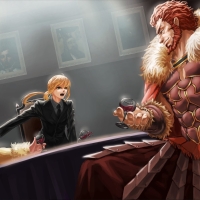
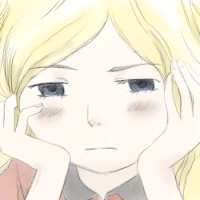
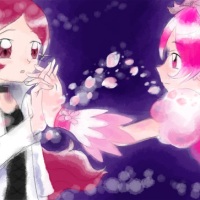
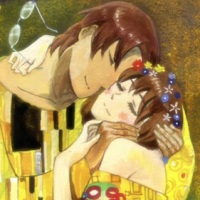
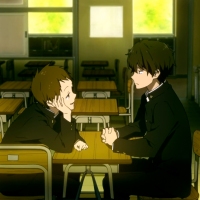


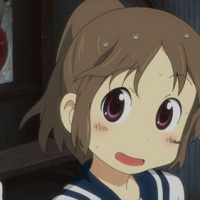



Excellent post on the rotoscoping. The general benefits with the body motions—particularly with how the characters so subtly shift their centers of gravity—is what makes rotoscoping a great feature. There’s so many fine details that enhance the realism in ways traditional animation can’t always achieve. On the other hand, its integration is so sloppy, such a mess of a potentially palatable sundae, that certain key scenes are rendered laughable. What an ugly mess of clumsy production values and yet an otherwise beautifully atmospheric piece. Unbelievable. *cue mangirl shaking his/her head*
Absolutely. It’s such a pity that the rotoscoping’s implementation was so robotic. A bit of creative license, and we could have seen something grand.
Also, I’ve edited the post to reference yours. Excellent post.
An interesting discussion of rotoscoping. I’m an expert in neither animation nor rotoscoping, so I didn’t catch those points. I don’t think it’s bad, but I didn’t really like Aku no Hana. Maybe it was the rotoscoping, but I think it was mainly the uncanny atmosphere, culminating in that ED. You know, THAT ED.
The lead-in for the ED in the first episode genuinely sent chills up my spine. It was certainly one of the last things I expected to happen, and extremely effective in that regard.
(though, admittedly, it does get rather silly if you listen to it for too long)
Thanks for reading!
You mention infinitesimal motion as a sign of shoddiness in the rotoscoping process. I’m inclined to agree, but only to a point.
I’m thinking of the “piece of shit” scene in episode one, when the teacher is about to strike Nakamura. Nakamura’s expression, at that moment, achieves a stillness that wouldn’t be possible in live action. Indeed, I can only believe that the director took care to make that moment as still as it was. Which suggests (not conclusively, but convincingly) that the director also knew what he was doing, during scenes in which these tiny movements are present.
(Or! Because Nakamura isn’t talking in that scene, it’s the only time he could achieve such stillness, given the computerized rotoscoping. In which case it would be a weakness of craft, exactly as you say.)
The terrible imaginary question remains: Would we have such strong feelings about this show if it existed in a vacuum? Would there be reason to care this much if we couldn’t compare this rotoscoping to the 50-year history of highly stylized, “TV-manga” anime? Your answer seems to be yes, that the very design of the show creates an intended reaction, like Expressionist film.
I’m not sure, myself. I’m on the fence about watching more, if only because I’m not sure the subject matter is to my taste (utterly nihilistic, like “Dancer in the Dark” made into anime– there’s a place for art like this, but I don’t have to enjoy it). But as a technical analysis of this show as an animated product, I deeply appreciate this article, and I don’t think there’s anything else like it in the blogosphere. Cheers.
PS: Mine were Nietzsche and Anton LaVey.
christ, I had a field day (read:year) with Nietzsche in freshman high school. It was horrible.
I actually do agree with your assessment of the stillness. Since I really wanted to hone in on the motion in the episode, it slipped my mind to address the tremendous effect of the still cuts. Certainly, the planners of the scene knew exactly what they were doing, and what the effect would be.
As for the hypothetical, i think it’s impossible to say that the ‘anime’ look of anime has not altered our view of what animation /should/ look like. If all we have to inform our aesthetic preference for animation with is the anime look, then we fall victim to disjointing an anime because it doesn’t look like an anime. Such, I believe, is the case with the fandom reaction to Aku no Hana. The influence may be small (or large), but it is definitely there. I’m not even sure if I’d be talking about this show, if I weren’t comparing it to conventional anime.
I’m definitely going to watch more of the show, if not solely to see if the overall effect pays off. I do think the show has a high potential for wanton pessimism, but I’m willing to give it a shot. I’m glad you enjoyed the article!
There are a few interviews out there where various staff members on Apollon (don’t have links on me right now sadly) swear that none of the scenes were rotoscoped.
I’m reading some of the information right now, and it would seem that most of the scenes (excluding the two shots Bahi JD did) were rotoscoped. If these sources are to be trusted, at least.
http://myanimelist.net/forum/?topicid=581501&show=140
http://www.oricon.co.jp/news/movie/2008951/full/
I am always amazed by the array of knowledge shown by writers on this blog – please keep doing what you are doing!
Lily
Thanks for reading!
I have to admit, the rotoscoping has moments that “intentional suck” doesn’t explain. Impossible stillness in the background or weird action movement. I’m not an animation buff though, so only the most obvious examples bothered me.
By the way, mine was -gasp!- Baudelaire. I never stole anyone’s gym clothes though, I could barely remember to take mine back.
It would seem to me (as it does to 2DT above) that the still parts of the episodes were intentional, for a jarring effect. As for the “weird action movement,” would you happen to have any examples? I’d love to talk about them. It’s possible that I may have overlooked some of the stranger moments.
I actually forgot my gym clothes so many times that my mother stopped buying them for me. Middle school was a rather interesting time in my life.
The “framerate” in anime tends to get played around a lot, especially in scenes with a lot of movement. Three drawings might stay for one frame (or 1/24th of a second) each while the next one is held two frames. You can have a combination of ones, twos and threes in a single second of animation.
As you’ve said, lot of the technical problems in Aku no Hana can be explained with the lack of a budget. A Scanner Darkly is undoubtedly more expensive, but it also has less time to cover compared to a thirteen episode series. I’d also like to bring up how the eyebrows are done here. Even when the bangs are supposed to reveal parts of the forehead the eyebrows still get bucket painted as if they were part of the hair. Nakamura in particular suffers from this a lot.
Absolutely, and I’ve edited the post just in case I didn’t make that clear. It’s interesting, too, when certain aspects of the frame are animated on different times than others in the same frame. For example, Shingeki no Kyojin’s OP sequence, particularly the cut with everyone spidermanning across the city, has the characters constantly switching between ones and twos based on their speed and relation to the background. It’s fascinating.
On the topic of the budget: it’s either that, or the production schedule was handled horribly. And the eyebrows really are horrible, aren’t they?
Robertson Davies and Farley Mowat. Oh Canada, indeed.
Krizzz.
Definitely Jean-Paul Sartre and Albert Camus, as well as a little bit of Alan Moore.
I think out of those three, I really wanted to talk about Sartre. The problem was that I didn’t fully understand his philosophy, and didn’t want to be shamed. I found out years later that what I would have said was actually dead wrong. Saved some face!
– Rotoscoping was mostly used in the early years of Western animation, the Fleischer Studio pretty much started it all.
– Disney actually didn’t rotoscope as much as you think. For “Baggage Buster”, they had to bring Goofy back down to reality. Their team, particularly the nine old men, were just that good at referencing life.
– I’m pretty sure the dance scene for Anastasia was rotoscoped, but I’m not sure if that was it.
– Motion Capture is pretty much the 3D equivalent of rotoscoping and yes, quite a few studios do this. To the point where Pixar/Disney had this thing about how all of their stuff was hand key’d because some other studio won some award. And now the award has changed so it has to be 100% hand key’d.
– I know Bahi JD did two of the cuts in Sakamichi no Apollon and those weren’t rotoscoped at least. Amazing guy.
– I’ve been told Precure is 30FPS except for the ED which is 24FPS, but I haven’t looked into it.
People need to remember there’s a difference between referencing from life and rotoscoping. There’s nothing wrong with rotoscoping. It’s cheap and effective at creating smoother animation, but it should be done well because of that.
-Indeed.
-Well, I suppose that depends on how you look at it. I’ve heard varying reports on the topic of rotoscoping in Disney films. For example, Snow White was rotoscoped, and then exaggerated on top of the trace. However, I’ve heard that many of the latter films only rotoscoped in order to have a reference, and then were drawn completely separately (I’m thinking specifically 101 Dalmatians). I could be wrong, however.
-I believe so, yeah. However, it’s probably similar to Snow White in that there were (not as) heavy modifications on top of the rotoscoping.
-Indeed, as well.
-The two cuts of Apollon you’re talking about are apparently the two cuts outside of the concert (with the people inviting others to the concert). See several comments above for the link. I have to admit, those two cuts were still very impressive.
-Uh, strange. I’ll have to look into this, as I’m not much of a Precure fan.
I wholeheartedly agree about the quality of rotoscoping. It is as much of an artistic choice as any other technique. The quality, however, rides on its execution.
This is an interesting article.
Personally, I thought the visuals were interesting because of the detailed movement (what Nagahama decides to show you), but I actually thought that a lot of the “strength” of the visuals came from the fact that the base was very strong:
I feel like the strength of the show’s visuals comes from the base footage that the studio has been cribbing from, rather than like the ingenuity of the animators…
Like, I’m inclined to think that it’s more about the direction of the live-action actors (who, interestingly, sometimes are not voice actors in this production, going by ANN’s staff page) than it is of the animators, which is probably very different than most anime.
And the base footage would be interesting to look at… for all we know, this was all shot in a warehouse somewhere, but then they composited everything later on.
(there was this one scene in episode 2 with Kasuga pumping away on his bike and for a moment, I was under the impression that maybe the original actor wasn’t on a bike, but an exercise bike… it would definitely be easier to capture the intensity of the sequence if it was done on an exercise bike)
This entire production is such a black box right now, so I’m interested in more director/staff interviews.
God knows if we get that though.
Also, some of the still cuts are pretty cool: the zoom to Kasuga’s face in the first episode really stands out to me…
In fact, that entire sequence was awesome… people talk about “why anime?”, not realizing that maybe Nagahama wouldn’t have access to tools that he would in live action film in order to set mood like that… and even looking beyond the production stuff, it’s quite possible that he’s still very interested in doing “anime”.
Kawajiri put it best: anime is just very “cinematic” and “addicting”…
For all my frustrations with it over the years (Hiroshi Hamasaki making a marvel anime? Ryosuke Nakamura making a 4-koma adapation? Atsuko Ishizuka making a harem show? WHAT?), I guess there’s a reason why I myself have stuck around lol
(I do like Ishizuka’s harem show though… felt a lot like a love-letter to other animators out there: despite how bad it all gets, never give up)
Pingback: Bloglite Episode 02 – First Impression of Evil | rayout
I don’t think it’s fair to compare the rotoscoped animation in Aku no Hana to the more mainstream anime animation styles of the day. Aku no Hana’s use of rotoscope portrays almost constant and continuous motions of the characters — that means entire ‘cels’ have to be redrawn for the whole character, sometimes for multiple characters at once. Compare that to most modern anime, where a character talking for 15 seconds may only require a camera pan and some lips flapping, which requires significantly less animation and allows for the re-use of previous ‘cels’ with only minimal changes. What “Aku no Hana” loses in smooth framerate, it makes up for in the increased detail of motions and movements we see of the characters (and given that body language makes up a large percentage of human communication, we get a more intimate understanding of the characters and what they’re thinking because of all the little visual cues we’re getting, that we don’t see in most mainstream anime).
It also naturally follows that movie-level framerate wouldn’t be as possible for a TV production budget, so using frames per second to tout that “Aku no Hana” is “lazy” or of a “poor quality” in the wake of works like “A Scanner Darkly”, is reminiscent of saying that the animation in One Piece the TV is “bad” because the “Strong World” movie has more fluid animation and frames per second. It’s one thing to say that there’s less fps, but whether that makes the show ‘look bad’ is an entirely subjective opinion.
As an artist myself, I think “Aku no Hana” looks fantastic, and I don’t have to compare it to the works of Don Bluth or Ralph Bakshi to qualify my opinion, anymore than I would comparing any other animated work to something else in order to determine whether I think it looks good or not.
Having to draw from scratch while conceptualizing movement is much harder than tracing over live action footage, especially when little modification is done to the final drawings. I really have no idea why you’re comparing the two. Smoothness aside, the line consistency for each character wavers too much from drawing to drawing, resulting in people that look like they’re melting.
Long running shows such as PreCure might reuse footage of transformations and signature attacks because of how much time they have to cover but a majority of “otaku hour” TV series rarely recycle drawings. Each shot of the storyboard still has to be drawn from the ground up.
One reason frame rate is brought up is the portrayal of realistic movement. As stated in the article, animation makes use of smears and holds to make the most out of each frame, since trying to animate everything without the use of such techniques is going to take a lot of time and money. Even animation done on twos can look convincing enough if the movement is slow, but AnH does it on threes most of the time.
I don’t disagree with you in regards to the artistic difficulty level of drawing something completely from scratch versus tracing over live-action. However, I’m talking about sheer workload, and about how limited animation techniques can’t be as heavily applied to Aku no Hana as they are in regular TV anime.
Almost every TV anime out there heavily uses limited animation techniques throughout each episode, eg. when characters talk only their lips flap, long uses of pans and cels floating, looping the animation within the same sequence (when characters talk, walk, run, etc.). It’s only in rare instances that full-on sakuga animation actually takes place — for the most part, these limited animation techniques dramatically make up the bulk of TV anime episodes, and help to significantly reduce the complexity and number of cels that need to be drawn in any given episode.
Aku no Hana can’t really employ these techniques for its animated sequences. The constant movement that the rotoscoping style employs basically requires each character to be redrawn for every 3 frames. That means the number of cels that have to be completely redrawn is increased enormously compared to regular anime.
Let’s compare regular TV anime and Aku no Hana’s animation, say, for a character talking over a ten second time frame. In a regular TV anime, you would reanimate a pair of lips that flap while a camera pans over the character, basically requiring that you draw 1 cel for the character, and 3 or 4 cels for the lips flapping (which you overlay) — ultimately, you need maybe 5 or 6 hand-drawn cels to animate the entire ten second sequence. Now compare that to Aku no Hana, where in the same ten-second time-frame you have to redraw the ENTIRE character (not just lip flaps) for every 3 frames. At 8 hand-drawn cels per second, that’s 80 separate hand-drawn cels you have to completely redraw for the ten second time-frame. Sure, it’s mostly tracing, but that’s still a LOT of cels you have to draw. 6 cels versus 80 is a big difference, and it’s part of the reason why comparing “frame-rates” doesn’t make sense when discussing Aku no Hana — the actual number of cels drawn is significantly higher than what you’d see in a typical television anime episode. It also explains why the cels are so low-detail in Aku no Hana — if you have to draw 80 cels when your budget typically accomodates only 6-10 for the same timeframe, you’re obviously going to go with an artistic approach that doesn’t require a signficiant amount of detail in every cel, or else your workload balloons on an exponential scale. Really, FPS is moot in the Aku no Hana discussion, when the real question is how many unique cels are used per second.
Now if you can point out another TV-budget anime that fully employs rotoscoping in a way you find reasonably acceptable, I’d be interested to know about it. Otherwise, I think the approach they used here makes sense (and looks just fine to me).
Great article. A lot talk about this series from the manga, to rotoscoping, and direction. I’m not big on anime or mangas and oddly enough I don’t remember how I ran into to this series but like some of you said, there is a place for this type of art and I really appreciate it.
This series really reminds me of the movie ‘All About Lily Chou Chou’ with its atmospheric aspects and direction. It’s quite beautiful how the creator was heavily influenced by philosophy and literature and blending it up with perversion. Part of the reason why I really enjoy this is because the honest approach of sexual human nature translated in a honest, bold, bizarre and surreal ‘Japanese’ way that connects to our specific psyche. At this moment, we’re on this adventure or journey where we are about to witness and unravel their psychology of sex. In the end, I really appreciate the mood and tones that breath life throughout the ‘2D’ film.
Love my existential philosophers Jean-Paul Sartre, Albert Camus, and Nietzsche.
I welcome the art style but slam the pacing so far. I don’t read manga as such so am not familiar with the source material, but I think Aku no Hana has a lot of potential. Unfortunately, we’re now up to episode 3 and things are still dragging, so I’m not convinced the series will live up to it.
I actually love the calming pace of the story.
Calming is most definitely not the word I would have used.
Pingback: Spring 2013 Update: Space Bros, LN Adaptations, Crime Edge, Nyaruko-san, and Horizon! | Chromatic Aberration Everywhere
Pingback: A few of my favorite blogs | Otaku Journalist
Pingback: Back of the Envelope: The Infamous Bathroom Scene | Chromatic Aberration Everywhere